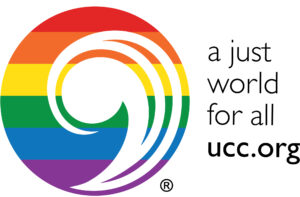 life’s big questions with evangelicals, and seekers from a wide range of denominational and religious backgrounds. We believe that God stirs in the midst of our questions, in the to and fro of conversation and struggle. And Jesus comes to life through relationships of care, compassion and respect. What emerges here, week to week, is a vibrant circle of discipleship and faith, a community committed to justice and peace, growing in spirit and grace through life’s many seasons. God is good!
life’s big questions with evangelicals, and seekers from a wide range of denominational and religious backgrounds. We believe that God stirs in the midst of our questions, in the to and fro of conversation and struggle. And Jesus comes to life through relationships of care, compassion and respect. What emerges here, week to week, is a vibrant circle of discipleship and faith, a community committed to justice and peace, growing in spirit and grace through life’s many seasons. God is good! ordain LGBTQ members as ministers. Our community is a vibrant and diverse circle: we love in different ways, our families gather at different tables; but we are united in love for one another and in the conviction that Jesus calls us to compassion, deep respect and collaboration. At the Community Church, it’s our privilege to celebrate weddings of all kinds, and each couple brings a sacred spirit of care and hope to us.
ordain LGBTQ members as ministers. Our community is a vibrant and diverse circle: we love in different ways, our families gather at different tables; but we are united in love for one another and in the conviction that Jesus calls us to compassion, deep respect and collaboration. At the Community Church, it’s our privilege to celebrate weddings of all kinds, and each couple brings a sacred spirit of care and hope to us. 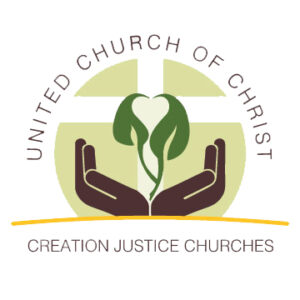 ecological concerns close to home in New Hampshire. The earth is our common home, a communion of God’s many beings and cultures; and our faith insists that ecological justice is deeply connected to issues of economic and racial justice and concerns for world-wide peace. We recognize these are all daunting challenges in 2020–but we’re determined to make common cause with all kinds of religious partners and academic and secular friends as well. We bring these commitments into our weekly worship practice; and we’re always learning from our youngest members, whose passion for the planet is a shining example of what we can be. We’re all in this together!
ecological concerns close to home in New Hampshire. The earth is our common home, a communion of God’s many beings and cultures; and our faith insists that ecological justice is deeply connected to issues of economic and racial justice and concerns for world-wide peace. We recognize these are all daunting challenges in 2020–but we’re determined to make common cause with all kinds of religious partners and academic and secular friends as well. We bring these commitments into our weekly worship practice; and we’re always learning from our youngest members, whose passion for the planet is a shining example of what we can be. We’re all in this together! 
An Early Map
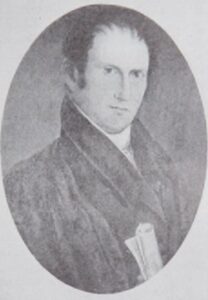
The Rev. Federal Burt
Mr. Burt’s invigorating tenure was followed by the 40-year pastorate of the Reverend Alvan Tobey, the longest in the history of the church. This was an extraordinarily eventful period in the life of the nation, including among other things the Civil War, and the church had to deal with issues such as temperance and the abolition of slavery that were part of the reform enthusiasm leading up to it. Mr. Tobey and his congregation were not always in accord on these matters, nor did he always feel appreciated. The most visible and lasting consequence of his ministry was the erection in 1848 of the building in which we worship today. In both architecture and emerging terminology among Congregationalists, the building was a “church” rather than the “meetinghouse” that had preceded it.
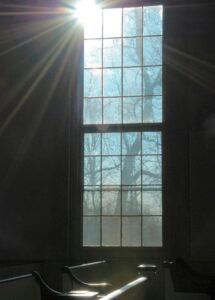
Sanctuary

University of New Hampshire
In 1961, the same year the decision was made to go ahead with the education building, the church voted to become a member of the United Church of Christ, a merger of the Congregational-Christian and Evangelical and Reformed churches, approved by both denominations at their national meetings on July 25, 1957. The same year the Durham church became one of the first in the state to sign on to the merger, the New Hampshire Congregational-Christian Conference decided to become a state UCC conference. Many local churches in the state dragged their heels, worrying about compromising congregational autonomy, but eventually 90 percent of the Congregational-Christian churches in New Hampshire followed Durham’s early lead by becoming members of the UCC.
Another landmark year was 1976, when the church responded to a generous bequest by remodeling the sanctuary a third time, installing a concert-quality organ as a community as well as a congregational resource, establishing a significant fund for mission and outreach, and providing the land for the construction of the Church Hill Apartments for the elderly. In a nod, at least, to a growing ecumenical consciousness, the remodeling of the sanctuary resulted for the first time in a divided chancel centered on the Communion table rather than the pulpit-centered arrangement that had been in place in a variety of forms for 128 years. In addition to its other outreach programs, including making its facilities available to community organizations and activities of many kinds including a church-sponsored Boy Scout troop, the church has taken a leading role in encouraging and supporting the evolving forms of a Protestant ministry (and briefly an ecumenical ministry) to UNH students.
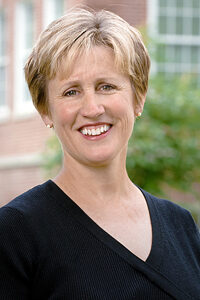
The Rev. Dr. Mary Westfall
In 1999, the church completed its most ambitious building program since 1923, the demolition of the community building and the substitution of the mid-level Fellowship Hall, providing a connection between the main building with its street-level sanctuary and the 1963 education building and chapel. Almost at the moment of its completion, the church welcomed the Reverend Mary Westfall, the first woman in the 281-year history of the church to be called as its senior minister. She was already on familiar terms with the church and community, having just directed the United Campus Ministry. Responding to her charismatic encouragement, the church since then has undertaken substantial new initiatives, including becoming “Open and Affirming,” a UCC designation indicating welcome to members without regard to sexual orientation, the long-term development of a strategic plan for the church, a more flexible and diverse sharing of church facilities, the inauguration of a thrift shop designed as a community outreach program , and an emphasis on programs and activities aimed at environmental responsibility, peace, and social justice.

